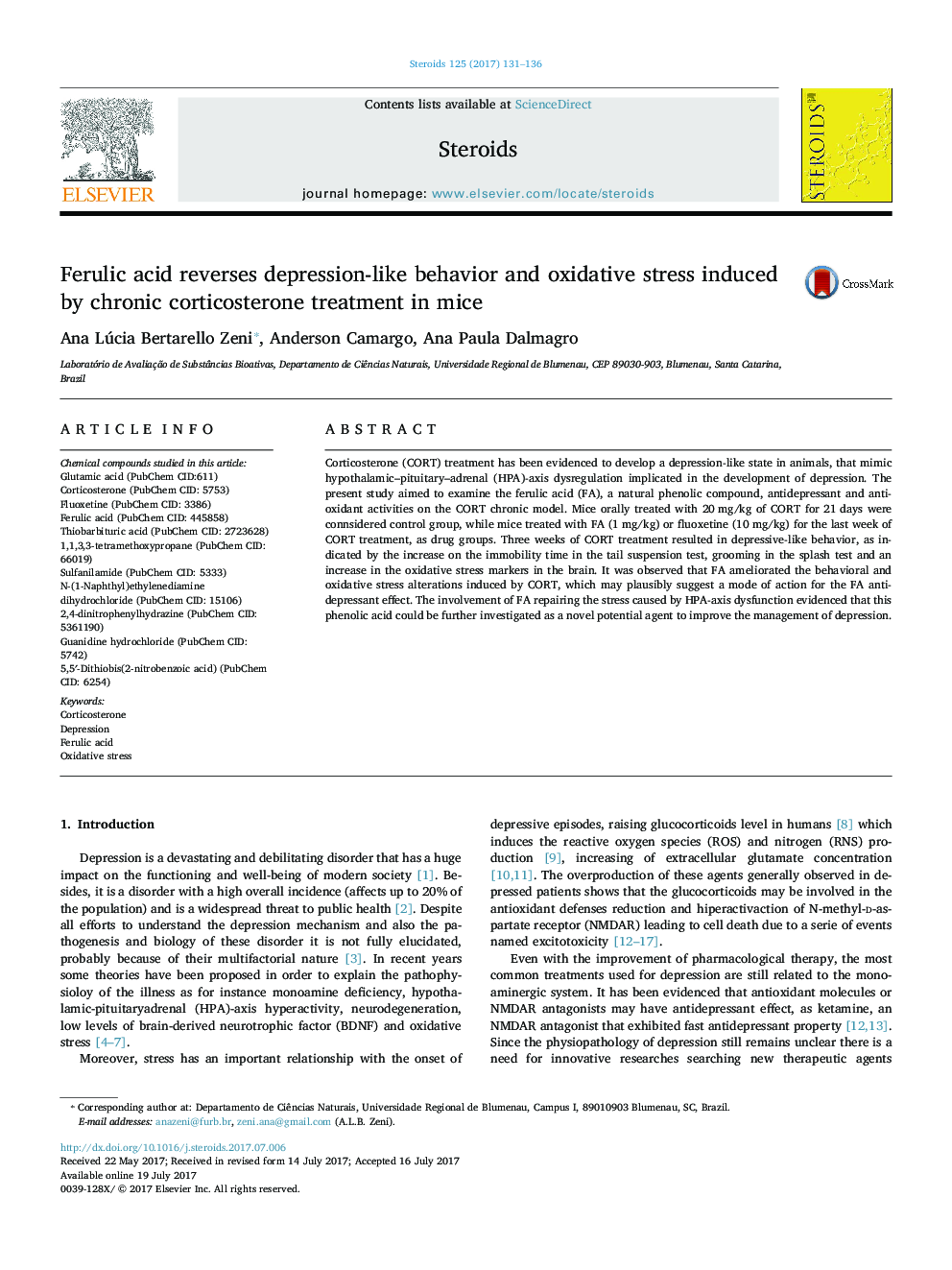| Article ID | Journal | Published Year | Pages | File Type |
|---|---|---|---|---|
| 5516630 | Steroids | 2017 | 6 Pages |
â¢Chronic administration of corticosterone elicits depressive-like behavior and oxidative stress.â¢Ferulic acid abolishes the depressive phenotype induced by corticosterone.â¢Corticosterone administration increases the levels of oxidative stress markers in mice.â¢Ferulic acid reverses the corticosterone -induced oxidative stress in the mice's serum and brain.
Corticosterone (CORT) treatment has been evidenced to develop a depression-like state in animals, that mimic hypothalamic-pituitary-adrenal (HPA)-axis dysregulation implicated in the development of depression. The present study aimed to examine the ferulic acid (FA), a natural phenolic compound, antidepressant and antioxidant activities on the CORT chronic model. Mice orally treated with 20Â mg/kg of CORT for 21Â days were connsidered control group, while mice treated with FA (1Â mg/kg) or fluoxetine (10Â mg/kg) for the last week of CORT treatment, as drug groups. Three weeks of CORT treatment resulted in depressive-like behavior, as indicated by the increase on the immobility time in the tail suspension test, grooming in the splash test and an increase in the oxidative stress markers in the brain. It was observed that FA ameliorated the behavioral and oxidative stress alterations induced by CORT, which may plausibly suggest a mode of action for the FA antidepressant effect. The involvement of FA repairing the stress caused by HPA-axis dysfunction evidenced that this phenolic acid could be further investigated as a novel potential agent to improve the management of depression.
